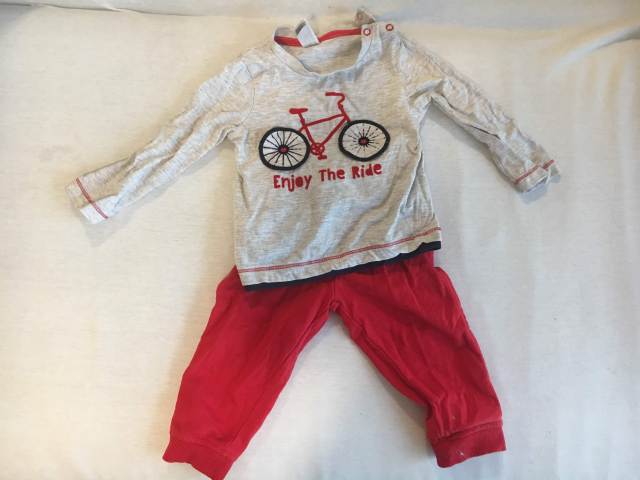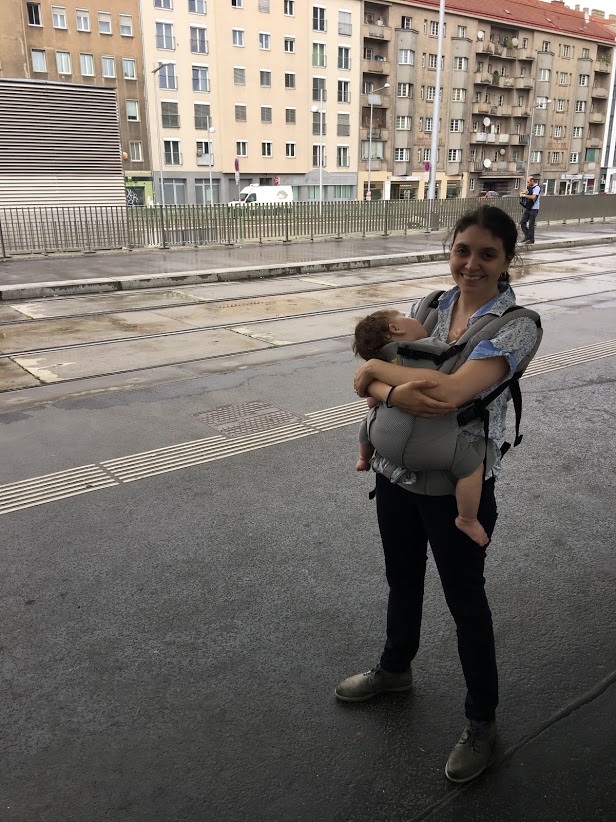
As someone who has studied clothing, I enjoy having a nice wardrobe and enjoy being “put together.” While living in Minnesota, I slowly acquired a good collection of clothes, purchased mostly on sale or second hand. Having a baby shifted my priorities away from my own clothes, partially because initially nothing fit or was functional for my stage of life. I have a well dressed baby, but I’m making do for myself until next spring when I will buy a few wardrobe items that I love. Maybe I’ll even be able to get a sewing machine and get back into sewing by making toddler clothes, but that’s probably wildly optimistic.
Before moving to Austria, I sorted through everything I had held onto (too much!) and narrowed down my wardrobe to clothes that currently fit, would probably fit in the next few months, and a few things I just loved and couldn’t let go of. This left me with rather full suitcases, but surprisingly little to wear in warm weather.
Most Austrian apartments don’t have closets, so one needs to buy free-standing wardrobes. Thus far we have purchased one relatively small wardrobe for a large apartment, as well as a dresser that contains baby stuff. Matt and I share this wardrobe and everything else is under the bed in garment bags.
I do not have space for an extensive collection of clothing, nor is it financially prudent to purchase many new clothes all at once. Most importantly, I want to make do with fewer items of clothing and build a collection that mixes and matches, largely for ethical reasons. My style is pretty consistent over time and I want to buy only what I love in order to be less wasteful.

So, last spring I bought a few things, only one of which– a shirt from the Austrian brand Gloriette– is really high quality. I usually buy neither very cheap, nor very expensive clothes. Okay, at this point I occasionally buy very cheap and never buy very expensive clothes. Obviously, cheap and expensive are very relative terms.
I’ve never had such a small rotation of clothes before and it would have been fine, except the quality has been a disappointment. Most of my clothes simply can’t withstand being worn (and washed) so often! Long term there are a number of different solutions to this problem, including making my own clothes again and making time to do proper repairs. However, it is disappointing to purchase a cotton dress that retailed for over $100, only to have stitches come out three months later. I fixed the problem by hand as best as I could in two minutes, but so much clothing is made to fall apart, leading many people to constantly shop for new, equally shoddy quality clothes. And how many people going to bother to fix a $15 dress they purchased new?
Purchasing second hand is another option, especially in the US. Unfortunately, I have not yet found any stores similar to Goodwill and the only consignment store I visited was asking 30€ for a cardigan that cost maybe 50€ new.
The consumption of poor quality clothes is a systemic problem, and only a small number of people can afford to purchase very high quality clothing new. Americans on average spend a much smaller proportion of their income on clothing than they did in the early to mid twentieth century, yet they own much more clothing. For now, I’ll try to wash my clothes only when needed and be as careful as I can with what I buy.
